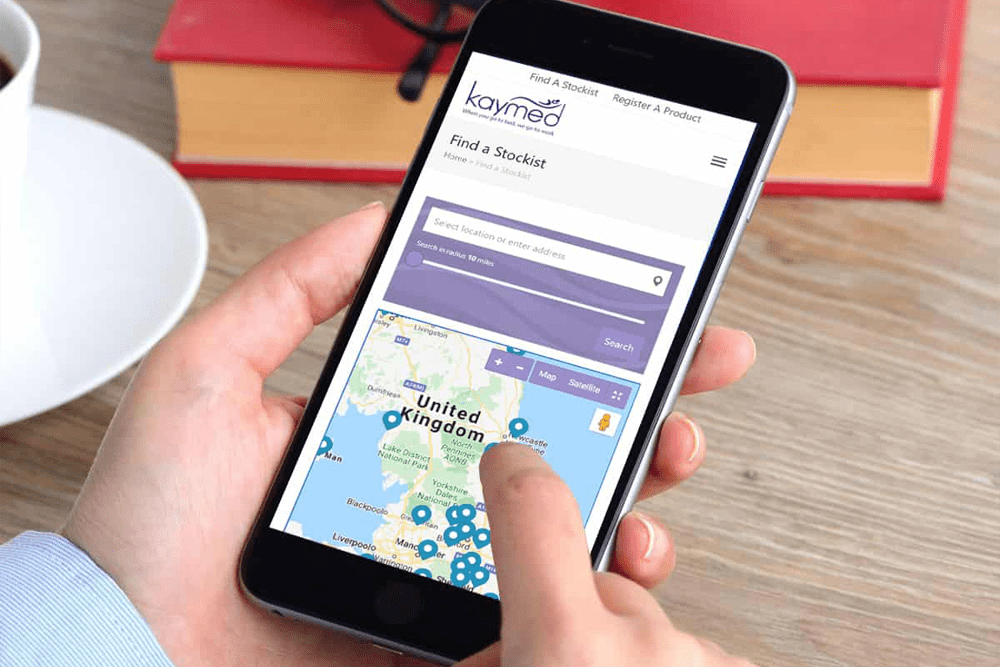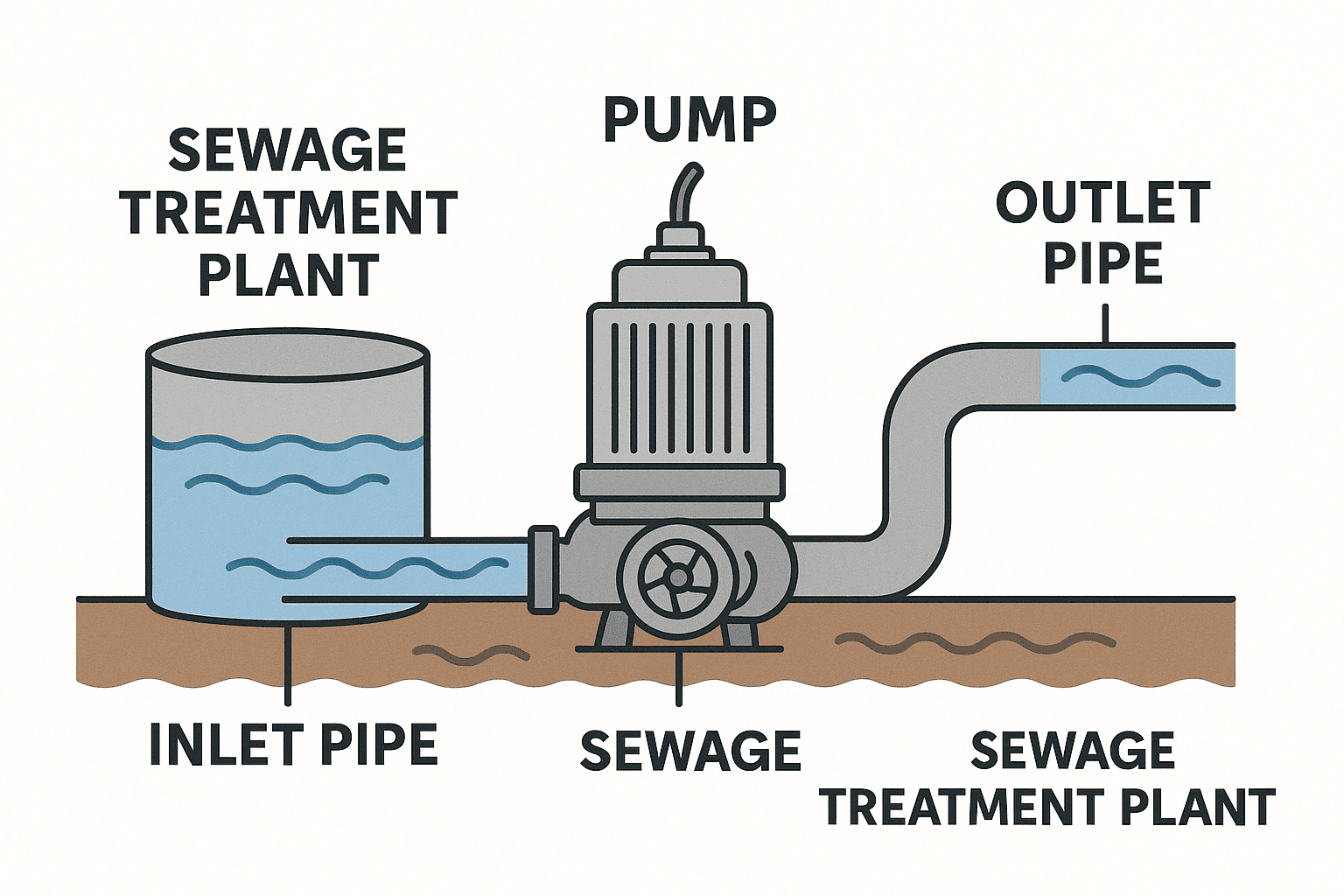The importance of making profitable sales
Making new sales is critically important for SMEs (Small and Medium Enterprises) because it is the lifeblood of their business. In this article we look at a simpler and faster route to sales. Here are some reasons why new sales are crucial for SMEs:
- Revenue generation: Sales are the primary source of revenue for SMEs. Without sales, SMEs cannot generate income and cover their operational costs.
- Growth and expansion: New sales enable SMEs to grow their customer base, expand their product or service offerings, and enter new markets.
- Competition: In today’s competitive business environment, SMEs must make new sales to stay ahead of their competitors. Failure to do so may result in losing market share and revenue.
- Cash flow: New sales help SMEs maintain a healthy cash flow. Regular sales enable SMEs to pay their bills, invest in new equipment or technology, and hire new employees.
- Brand building: Making new sales helps SMEs build their brand and reputation in the market. Positive customer experiences and word-of-mouth referrals can help SMEs establish themselves as a trusted and reliable provider of products or services.
Making new sales is critical for SMEs because it enables them to generate revenue, grow their business, compete in the market, maintain cash flow, and build their brand.
Approaches to making profitable sales
There are several simpler and faster routes to sales for SMEs (Small and Medium Enterprises). Here are a few:
- Leverage social media: Social media platforms such as Facebook, Twitter, and LinkedIn are powerful tools for SMEs to reach their target audience quickly and cost-effectively. By regularly posting updates, creating engaging content, and using social media advertising, SMEs can build their brand and generate sales leads.
- Offer discounts and promotions: Discounts and promotions are a great way to attract new customers and incentivise repeat business. Offering a discount code or a free trial can encourage potential customers to try your products or services and convert them into paying customers.
- Partner with complementary businesses: By partnering with businesses that offer complementary products or services, SMEs can expand their reach and generate more sales. For example, a commercial photographer could partner with a web designer to offer bundled deals to customers.
- Attend networking events: Attending networking events can help SMEs to meet potential customers and partners in person, build relationships, and generate leads. Events such as industry conferences, trade shows, and local business meetups can be valuable opportunities to promote your business and generate sales.
- Focus on customer referrals: Word-of-mouth referrals from satisfied customers can be a powerful source of new business for SMEs. Encourage customers to refer friends and family by offering incentives such as discounts or rewards for successful referrals.
- Optimise your website for search engines: A well-optimised website can help SMEs to attract more organic traffic and generate leads. By using relevant keywords, optimising your website’s structure and content, and building high-quality backlinks, you can improve your website’s search engine rankings and attract more potential customers.
What stage are your prospects?
In it’s simplest form there are four stages of developing and gaining a customer. At the first stage they may have an inclination that they LIKE your product /service. Following on from this stage the prospect has to WANT your product or service. So whilst I might like something that’s irrelevant if I don’t actually want it.
The next stage of the process is NEED and this is getting us towards the point of purchase, so not only do I want it II actually need it whether this is to satisfy a functional or an emotional requirement. Finally we have the MUST HAVE stage where I want this specific product / service.
The Utopian position is to create a proposition that has a MUST HAVE characteristic. So think about your proposition and is there anything you can do to it to acquire this “Must Have” status

For an alternative approach to sales could CEO thinking help
Assuming there are 3 stages the challenge is getting the customer to move through the stages
Stage 1: Why This – I may need a product or service to solve a problem but there are probably direct competitors, indirect competitors and future competitors that provide a solution / alternative to the customer
Stage 2: Why You – so what is it that makes You different from the others – now this can be a challenge in its own right. Remember being seen as the cheapest potentially isn’t typically a long term point of differentiation
Stage 3: Why Now – and this is often the part of the sales process that is the difficult to impact especially on higher value products or strategic projects. I might know that i need a service, have identified that when I purchase I will purchase from you but at the moment don’t actually need to make a decision (even though not making a decision could potentially be costing money)
What’s your CEO
1: Claim
In one sentence or a few words what is it that you are going to provide your customer. What are you offering your customers that makes it a no brainer to purchase from you
2: Evidence
What’s your evidence or proof that it works. This can be provided through a variety of mechanisms, examples include
- Letting the customer test the product / service before they pay
- Video testimonial – whereby a customer describes / explains how good you were
- Endorsement from a trusted authority – perhaps a named known person, tv channel or magazine
- 100% money back guarantee
3: Offer
The hardest part of the process as this is all about identifying what is your irresistible or mafia offer. Now this isn’t what’s the promotion or special offer this is “the proposition you are providing. how it adds value or is better / different than others and why you should buy it now”
Could CEO be a simpler and faster route to sales – In Summary
What can you offer your customers that makes it a no brainer to purchase
How effective is your sales department?
How would you score your current sales department between 1 and 10 ?
(with 1 being useless and 10 being outstanding and couldn’t be improved)
Why did you give that score?
- You cant find enough good sales people
- Don’t have enough good leads
- Poor at closing sales
- Don’t seem to have a clear sales structure
- etc
Information on sales people performance
- Up to 81% of sales people hires fail inside the first 12 months (Leadership Global Survey)
- Every company is looking for a “great” salesperson with super human capabilities
- In many companies the sales person is expected to be a master at
- creating a lead
- First meeting
- The initial follow up
- Presenting
- Negotiations
- Closing
- How many people have you ever come across who are genuinely “great” salespeople. If you have been in business for over 25 years the answer is probably less than 5
Identifying the Tasks and Responsibilities
There are typically 6 prime sales roles (note the titles may change dependent upon the organisation)
- Telemarketing
- Internal Sales
- Sales Executive
- Key Accounts
- Sales Manager
- Sales Director
When you look at how your sales team is structured / resourced you need to consider
- What sales outcomes are you looking for
- Are you structured cost effectively
Looking for the perfect sales person
How many of you have tried to find the perfect sales person to help your business grow only to be disappointed when the sales dont roll in.
Lets consider your recruitment process did you conduct
- Personality profiling
- Social Media Checks
- Go through references in detail
In many cases we are looking for sales force silver bullets but don’t invest the time in the recruitment process.
If a new sales person joins your company from a process, products, tools and sectors perspective what happens on the
- first 30 days
- first 60 days
- first 90 days
It is critical to have clear objectives for each of the 4 disciplines.
Question : If you are not training your sales people where are they learning their sales skills?
Answer: In front of your customers and prospects
Sales is about systems and processes
Sales can be classified as covering four elements Vision, People, Process and Management
Get More Sales by The TEA Approach
Get More Sales by The TEA Approach
For many purchases there is a need to engage in a conversation before the transaction can be completed.
So how can you help encourage / start conversations in a retail or service environment. The TEA approach could be just what’s needed to set you apart.
Retail shops (non commodity) – Get More Sales by The TEA Approach
So a customer enters your shop and is browsing, you approach them with “would you like a cup of tea or coffee its FREE”. Now if there are kids involved you can modify this to “would you like a cup of tea or coffee or squash and biscuit there FREE”.
As soon as a person has a hot cup of tea you have them in your shop for at least 5 minutes. That’s 5 minutes browsing time, or time to demonstrate or more importantly time to start building a relationship.
Professional Service Companies – Get more sales by the TEA approach
Now I know for many professional service companies time is money (billable in 5 minute chunks etc) so encouraging a prospect to sit down and talk could be considered wasteful.
However what if this time could be used in a structured way to help you better understand your clients needs and develop some rapport (all helped by a nice cup of tea and a biscuit). This simple act could be the only “differentiating element” between your competitors and you.
Realising The Potential In Your People
A businesses most important asset is its people!
Businesses are judged on their financial results. So how do you make sure that you get the most from your people to achieve your business objectives.
With productivity being such an important issue the challenge is how can we work better together.
The following 3 activities are interesting challenges to set your team to help in the management of performance.
Activity 1: Focus and Awareness
Three people throw and catch two balls. This activity is completed by 3 people standing side by side.
- The person in the middle and to the RHS have rugby balls.
- The aim of the challenge is the person on the rhs to throw the ball to the centre person who will throw the ball the person on the LHS.
- Note the middle person has to throw his ball up in the air as well as distributing the other ball.
Observation points from this activity
- Trust – the other throwers must trust that the middle man will do their part
- Communication – without effective communication the task will fail
- It may be necessary to practice the activity in order to get the timings and throwing process sorted
- You have to concentrate on the task if you get distracted the task cannot be completed
- You need to develop a process – as one thing follows another
Note: When you are doing the task i.e. throwing and catching you are focusing on the task and your awareness of other external activities becomes diminished.
Focus and Awareness
- Its difficult to focus and be aware
- Sometimes you need total focus i.e. getting a major piece of work completed on time
- Sometimes awareness is needed i.e. blue sky thinking
- So there is a balance to be had between focus and awareness.
Action: What measures do you have in place to check that both focus and awareness are implemented
If within your business you have team made up of Directors, Managers and Staff then within the 3 elements of Policy, Procedure and Execution how do they spend there time.
In an ideal world directors would be focused on strategic activities, managers would be looking at operational issues and staff would be involved in tactical activities.
Unfortunately with many SME’s the actual split ends up with directors getting involved in operational activities, managers splitting their time between operational and tactical and the limited number of staff on tactical activities.
Activity 2: Do you work as a team
The task as a team to lower the eight metre pole to the floor . Half the team stood on the LHS side of the pole, the other half on the RHS. Resting the poles on the index fingers of both hands with the arms outwards the team then attempted to lower the pole to the floor without everyone in the teams fingers maintaining contact with the pole.
About the task
- The lightweight pole would typically weigh about 250g
- In a typical team of 14 people, that’s 28 fingers supporting the pole
- As a team nobody wants to drop the pole so automatically the pole will rise.
- If the pole starts to rise then everybody else within the team has to move their fingers up to stay in contact
- Nobody was purposely pushing the pole up but as a new task they had no idea what was the right approach
Learning points from the activity
- To work effectively as a team
- You have all got to act together
- There needs to be a high degree of TRUST within everybody. If one person doesn’t engage within the team that can significantly impair the performance.
- Importantly just because you might ultimately complete the task it doesn’t actually mean that you are a high performance team
- Ultimately are we achieving results in spite of ourselves
The Issue of Change – Activity 3: Group chaos
As group spread out into a circle so that you can see everyone. Then everybody chooses 2 people (preferably people you don’t know well). the idea is to stand in a position equidistant between these two people. Once you say the word “Go” everyone can move into the required position.
As you move it breaks out into a chaotic situation, as ultimately your movement causes and impacts on others people movement. Interestingly some people will stand still waiting to see what happens. Now this is fine but of course as they then move so it impacts on the group layout
Change is when something different happens
This could be through
- new people
- new processes
Important note: Not everybody changes at the same pace. I’ll move when I’m happy to move, which then impacts on the group – its the issue of cause and effect. We are all different “why should I change”.
Often there are two distinct types. Those who when faced with change don’t hold back (and in fact positively race forward, thus creating more change) and those who are slow and need encouragement / pushing in order to achieve change.
Why do you need performance management?
-
- Provides structure
- Offers improved management control
- Delivers a direct financial improvements
- Encourages engagement
- Defines team roles and competencies
- Increase motivation and productivity
Making Time For Your Marketing And Learning
New Customer Expectations.
We operate in a world where things are constantly changing and evolving. Therefore shouldn’t it be the case that our training needs to constantly change
In 2022 there will be computers more powerful than a human brain.
In 2040 it is forecast that computers will be more powerful than the whole of the human population.
Next Generation Customer Centricity
Fundamental Enablers
- Computer storage power
- Wireless networking
- Cloud software platforms
Changing Nature of Business
- Digital forms – front to back integration
- Digital transactions (consumerisation)
- Peer to Peer trust (block chain)
Old Rules No Longer Apply – Leading To Just In Time Learning
- Ambiguous and chaotic
- Pace of change accelerating
- Rate of learning increasing
- New business models
- Everything becoming software
The New Business Reality
- Change is now continuous – capacity for learning is now lagging behind change
- The internet is the HQ of a global business
- The scale of global interdependence
- Learning – The movement from what you know to what you do
The Importance of Experience, Recording and Analytics
- Evidence based assessments
- Social video learning
- Competency and Skill Assessments
- competency frameworks
- learner profiles
- Assertion processing
- Talent development – social peer to peer and JIT micro learning
18 months for a good salesperson to perform
- To operate and be successful its about culture – so within the same industry can all go to the market differently
Locating Your Resources
- Originally we had “on shoring” making your product / service at your local location
- Then it looked as if you could deliver as good a product or service from a lower cost area so organisations “off shored”
- Now for many organisations we have the situation of “No Shoring” – it doesnt matter where you are you just need fast upload times and high definition capabilities
Learning activities are everywhere
- Learning is happening everywhere
- In the centre is the learner , the tools and the activities
- Need to collect the experiences that matter
- Quantifiable
- Sharable
- Trackable
Demand Sensing for New Opportunities
We operate in a world where things are constantly changing and evolving. Therefore shouldnt it be the case that our training needs to constantly change. Times change so quickly often customers don’t know what they what and they need a thought leader to help.
The issues are complex could coaching conversations be a way to share the learning
- Your organisation is ultimately highly complex
- When you are communicating to customers there are inefficiencies at the point of engagement
- Your customer is ultimately highly complex
So you need to ask yourself “what are the new industry needs? ” e.g. the bridge is the solution, crossing the river is the need
Making Time For Your Marketing And Learning In summary
- There is a need to shift to Just In Time learning
- Micro enablement of learning is critical – making things bite size
- The only sustainable competitive advantage is our ability to learn faster than the competition
Business Principles From Millionaire Entrepreneur
I recently had the good fortune to attend an event where the key note speaker (a highly successful multi millionaire) shared some of his business principles as he grew a business from zero into a £100 million operation.
There was a great deal of content but below are some of the key observations of this highly inspirational, successful and down to earth entrepreneur.
Business Principles Of A Multi Millionaire
-
-
-
- Follow one course until success – don’t get distracted or deviate
- The philosophy of those successful in business “There is No FREE lunch”. You have got to become responsible for yourself
- As the Chairman, Worker, Manager, Accountant, Toilet Cleaner within my own business – the rise would become effective as soon as I was
- Never give up – 5 up didn’t work, 6 up didn’t work , 7 Up was a success
- Don’t become complacent always take notice of customers
- Its always good to hear from other people – who can help you
- Do more than you are paid to do, eventually you will get more for what you do.
- The actual experience was of cleaning windows. When cleaning the windows he actually cleaned all around the frames (for the same price as just the windows) because he didn’t know any difference
- In business the answer is yes now whats the question. So in his case he went from window cleaning to property maintenance
- When you employ staff, they must be of the mindset and confidence that whatever you ask them to do (as long as its not illegal or immoral ) they will do. Flexibility is critical in a small business
- Time is critical – use the minutes to the best of your ability
- Be really nice to your customers, you want to deal with them in a way that they are not just customers they are “Fans” who shout positively about your business
-
-
Learning In Your Business
Organisation complexity impacts on learning
- Often limited learning and development functions within a company
- Many companies now employing a percentage of staff where English isn’t spoken as a first language
- High percentages of staff front line technicians with no spare time capacity
- Typically employees resistant to change
Historic Perspectives To Business Learning
- If learning was completed it was done in the classroom
- Typically less than 10% of the organisation had training
- Less than 25% of those within the organisation had development / progressing opportunities
Knowledge Assessments
First you need to identify what you don’t know and then you need to train on the gaps where there is no knowledge
Note – the important part is to just train on the missing elements not on what is already known. That way you save time
Then you need to make sure that information is visible within the company.
So Just In Time Learning becomes the order of the day. Knowledge delivered in a non sexy, relevant and fast format.
Its important to note that technology on its own doesn’t solve the problem.
Learning In Your Business – What’s critical to get right are
- having confidence in your colleagues to give them the power
- being confident that the content is correct / approved
- sharing allows us to identify best practice and worse practice
- have an internal cost for everything, that way we can see the value of the delivery
- Once you have great internal content, is there the opportunity to take this content and offer it to the customer . So for example if you supplied products to fish and chip restaurants could you take this information and make it available for training new staff
Want to pick up the phone and speak to us about your Website project?
Call us on: 01733 361729 mail: solutions@bdolphin.co.uk
Sales Need To Move from USP to CUSP
The technique of Unique Selling Point or Unique selling proposition has been around for very many years. In this article we will look at why we need to move from USP to CUSP.
It was first proposed to try and explain patterns that successful advertising campaigns of the 1940’s.
The logic being that the USP within the campaign was the proposition that convinced customers to switch brands.
The problem of a single USP
Unfortunately many companies follow the concept of USP rigidly and create a single USP that they use for all prospecting and as the driver for all marketing communication. The challenge is that one USP isn’t enough as most companies typically you don’t have a single customer profile.
For many B2B companies even if they are selling to a single sector there are often multiple types of people who are involved in the decision making unit. So for example if you are looking to become a new B2B supplier you need to satisfy the
- Person in charge of finance – they will be interested in payment terms / discounts / credit terms / the volume that need to purchased etc anything to do with payment criteria
- The general manager will most likely be interested in lead times, how stock will be delivered, maintenance & service, response times, what happens in the event of a problem etc
- The Technical manager will focus on elements such as specifications, performance, tolerance, reliability, ease of use
- The buyer or procurement could be interested in who can make their life really easy, the lowest cost price and who can make them look like a superstar (so that they can get a promotion)
From USP to CUSP
So don’t just think about creating or developing a single unique selling point, look at creating Customer Unique Selling Points based around what’s of importance and value to the specific person within the decision making unit. If you are selling to a single person (perhaps the MD) then they may be completing a variety of roles so could benefit from a variety of CUSP’s

As an SME Manufacturer is there a simpler and faster route to sales
Accelerate your sales process
As a small to medium-sized enterprise (SME) in manufacturing, there are several effective techniques you can employ to streamline and accelerate your sales process. One key strategy is to invest in digital marketing and e-commerce platforms. Establishing a strong online presence through a user-friendly website, social media channels, and online marketplaces can significantly enhance your visibility and accessibility to potential customers. By leveraging digital marketing techniques such as search engine optimisation (SEO), pay-per-click advertising (PPC), and content marketing, you can attract targeted leads and convert them into sales more efficiently.
Building and nurturing relationships with Existing Contacts
Another important technique is to focus on building and nurturing relationships with your existing customers. Implementing customer relationship management (CRM) systems can help you track customer interactions, identify opportunities for upselling or cross-selling, and provide personalised services. By delivering exceptional customer experiences and maintaining strong relationships, you can increase customer retention rates and benefit from positive word-of-mouth referrals, which can lead to new sales opportunities.
Embrace Automation
Furthermore, consider streamlining your sales processes by embracing automation and technology. Implementing sales management software can automate repetitive tasks such as order processing, invoicing, and inventory management, freeing up valuable time for your sales team to focus on building relationships and closing deals. Automation can also enhance the efficiency of your manufacturing operations, ensuring timely delivery and quality products, which ultimately contribute to customer satisfaction and repeat business.
Collaboration and networking
Collaborating with strategic partners and leveraging business networks is another effective technique for SMEs to expedite sales. Forming partnerships with complementary businesses or distributors can extend your market reach and facilitate access to new customer segments. Additionally, participating in industry events, trade shows, or networking forums can help you showcase your products, connect with potential buyers, and generate leads more effectively.
Measure – what works, what can be improved
Lastly, continuously monitor and analyse your sales performance metrics to identify areas for improvement and optimisation. By leveraging data analytics, you can gain valuable insights into customer preferences, market trends, and sales patterns, enabling you to make informed decisions and adapt your sales strategies accordingly. Regularly reviewing and refining your approach based on data-driven insights will contribute to sustained sales growth and competitive advantage in the SME manufacturing sector.

A simpler and faster route to sales – Summary
As an SME manufacturer, there are several simpler and faster routes to sales that you can consider. Here are a few strategies you can implement:
- Online Presence and E-commerce: Establish a strong online presence through a professional website and social media channels. Optimise your website for search engines and consider setting up an e-commerce platform to sell your products directly to customers.
- Digital Marketing: Implement targeted digital marketing campaigns to reach your target audience. Utilise platforms like Google Ads, social media advertising, and email marketing to generate leads and drive sales.
- Collaborate with Distributors and Retailers: Identify potential distributors or retailers who can help you reach a wider customer base. Collaborate with them to stock and sell your products, leveraging their existing networks and customer relationships.
- Attend Trade Shows and Exhibitions: Participate in relevant industry trade shows and exhibitions to showcase your products to a larger audience. These events often attract potential customers, distributors, and retailers who are actively seeking new products to add to their offerings.
- Build Relationships with Existing Customers: Focus on building strong relationships with your existing customers. Offer exceptional customer service, provide incentives for repeat purchases, and encourage them to refer your products to others. Satisfied customers can become your brand ambassadors and help drive additional sales.
- Implement Referral Programs: Develop a referral program where existing customers are incentivized to refer new customers to your business. Offer discounts, rewards, or exclusive benefits to customers who successfully bring in new sales.
- Leverage Online Marketplaces: Consider selling your products on popular online marketplaces such as Amazon, eBay, or Etsy. These platforms have a large customer base and can help you reach a broader audience quickly.
- Invest in Customer Support: Provide excellent customer support to address any inquiries or concerns promptly. Satisfied customers are more likely to recommend your products to others and become repeat buyers.
- Analyse and Optimise: Continuously analyse your sales data and customer feedback to identify areas for improvement. Optimise your sales process, marketing campaigns, and product offerings based on the insights you gather.
The specific strategies that work best for your SME manufacturing business may vary based on your industry, target audience, and resources. It’s important to experiment, track your results, and adapt your approach accordingly. For more information on a simpler and faster route to sales arrange a conversation




















